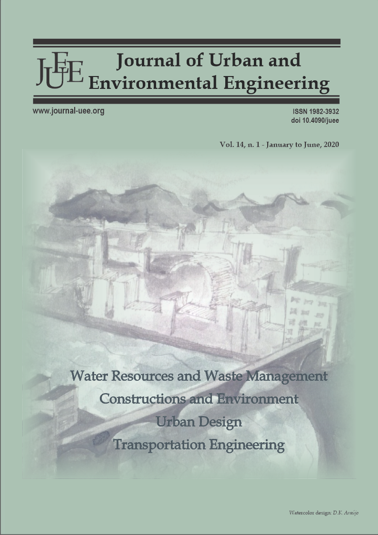FLOOD DAMAGE ANALYSIS: A BRAZILIAN CASE STUDY
DOI:
https://doi.org/10.4090/juee.2020.v14n1.150-160Abstract
Worldwide floods stand out as some of the most recurrent and potentially destructive phenomena. Risk reduction management must consider dynamics involving structural risk elements called indicators. The objective of this paper was to simulate an extreme flood event in the Pirapama river basin, Pernambuco State, Northeastern Brazil, and to analyze some risk components, focusing on the application of damage models in the Brazilian scenario. The hydrological model HEC-HMS (Hydrological Modeling System) was calibrated in order to generate streamflow for ungauged areas. The model was able to identify the highest flood peaks and the statistic criteria were consistent with daily simulation. The parameters calibrated for the HEC-HMS model allowed us to generate results used as input flow in HEC-RAS (River Analysis System). The hydrodynamic model HEC-RAS performed steady flow simulations for the peak flow that occurred in 2010. Remote sensing products with high spatial resolution were used successfully to identify and calculate dwellings surface in the municipality of Cabo de Santo Agostinho. Flood damage estimates were performed through transferred depth-damage curves which is a methodological option verified in the literature. The two main Brazilian studies on this field were selected. The difference between the functions is just over BRL$72 per square meter, and around BRL$85 million for the entire area in the 2010 event (BRL$234.58 and BRL$149.11 million). Those values were adjusted for inflation until 2019. A combination of different methodologies is a way to try to overcome the lack of information, but much remains to be done to validate damage analysis, especially in what concerns to prevention.Downloads
Download data is not yet available.
Downloads
Published
2020-06-07
Issue
Section
Articles




